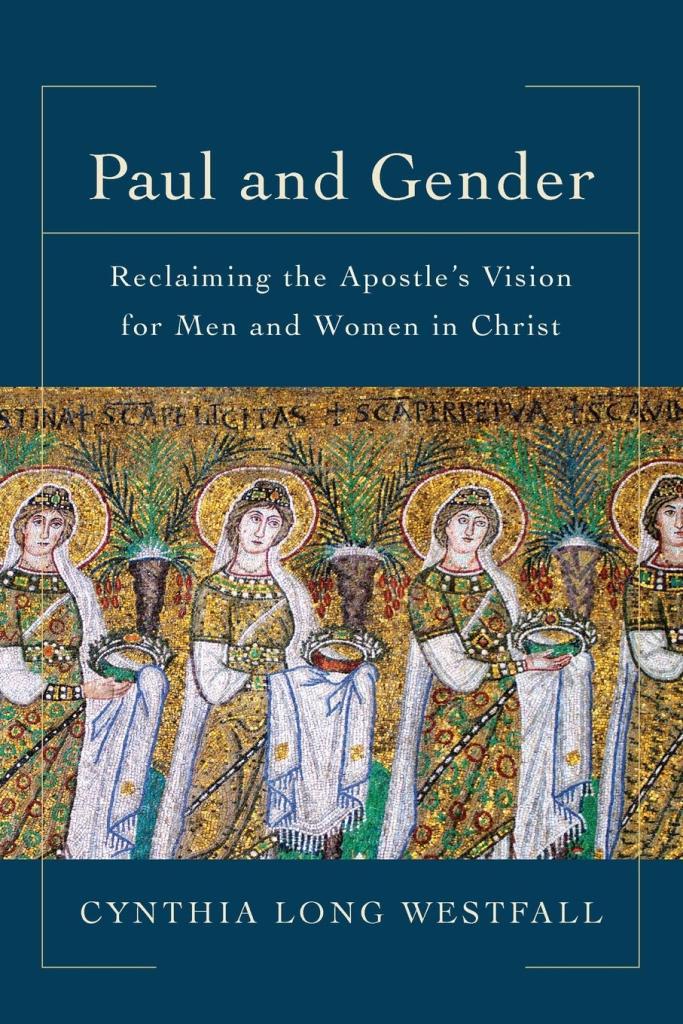 Why does Paul talk about women’s hair and veiling in 1 Corinthians 11? Paul’s comments in that chapter puzzle readers for many reasons. One reason is our lack of knowledge about the ancient world and especially its norms governing what people thought honorable or shameful.
Why does Paul talk about women’s hair and veiling in 1 Corinthians 11? Paul’s comments in that chapter puzzle readers for many reasons. One reason is our lack of knowledge about the ancient world and especially its norms governing what people thought honorable or shameful.
In this series, I will share two significant proposals that attempt to interpret 1 Corinthians 11 while taking seriously the role of honor and shame. This first post presents the view of Cynthia Long Westfall. The next post builds on Lucy Peppiatt‘s work.
The Text of 1 Corinthians 11:2-16
As a reminder, 1 Corinthians 11:2-16 says:
I commend you because you remember me in everything and maintain the traditions just as I handed them on to you. But I want you to understand that Christ is the head of every man, and the husband is the head of his wife, and God is the head of Christ.
Any man who prays or prophesies with something on his head disgraces his head, but any woman who prays or prophesies with her head unveiled disgraces her head— it is one and the same thing as having her head shaved. For if a woman will not veil herself, then she should cut off her hair; but if it is disgraceful for a woman to have her hair cut off or to be shaved, she should wear a veil. For a man ought not to have his head veiled, since he is the image and reflection of God; but woman is the reflection of man.
Indeed, man was not made from woman, but woman from man. Neither was man created for the sake of woman, but woman for the sake of man. For this reason a woman ought to have a symbol of authority on her head, because of the angels. Nevertheless, in the Lord woman is not independent of man or man independent of woman. For just as woman came from man, so man comes through woman; but all things come from God.
Judge for yourselves: is it proper for a woman to pray to God with her head unveiled? Does not nature itself teach you that if a man wears long hair, it is degrading to him, but if a woman has long hair, it is her glory? For her hair is given to her for a covering. But if anyone is disposed to be contentious— we have no such custom, nor do the churches of God. (NRSV)
I won’t presume to answer everyone’s questions about this passage in just a few posts. Instead, we’ll look at some of the cultural dynamics that go a long way in helping us make sense of Paul’s meaning.
Ancient Perspectives on Hair and Veiling
Most modern readers assume Paul orders women to veil and cover their long hair because the Corinthians effectively were stubborn feminists. Perhaps they wanted to throw off the veil as a sign of subordination. Or maybe they wanted to be liberated to express their individuality or even sexuality.
This interpretation could make sense if Paul were writing to us in the 21st century. But he’s not. His letter was written for us, but not to us. To sort out Paul’s message, we need to understand ancient Mediterranean views of hair and veiling.
Several scholars undermine the modern assumption that it was the Corinthian women wanted to unveil.[1] Accordingly, they cast serious doubt on the claim that Paul primarily corrects troublesome Corinthian women.
Consider just some of the insights from Cynthia Westfall’s incredible book Paul and Gender. (I’ll only summarize a few key findings. You’ll have to read the book yourself to get the background and citations.)
Here is a fundamental starting point to the conversation. Ancient people established laws regulating who could and could not wear veils. Only upper-class wives and women deemed chaste (i.e., sεxually pure) were permitted to wear a veil. Slaves and prostitutes, by contrast, were prohibited from wearing veils. Keep in mind that enslaved women especially were routinely exploited as sεx workers.
Whether one wore a veil was a matter of status. We’re not talking about being YouTube famous or anything like that. Instead, wearing a veil protected a women’s dignity. Not covering one’s hair with a veil signaled a women’s availability, so much so that a Roman man would not be held liable for seducing or even assaulting a woman who was not dressed “properly.”[2] Classicist Sarah Ruden adds,
For a Roman woman, “to get married” and “to veil oneself” were exactly the same word… The veil was the flag of female virtue, status, and security. (Paul Among the People, p. 80).
What’s the big deal with hair? For the ancients, hair was erotic. In fact, scholars observe that women’s hair was considered a part of the female genitalia, according to Greco-Roman physiology.[3] (I bet you won’t ever read 1 Corinthians 11 the same again.)
Ruden, therefore, says that ancient literature adds
some context to show just how disturbing, how distracting to men and stigmatizing to women, the lack of a veil could be. This context supports the idea that Paul was being protective rather than chauvinistic. (p. 82)
At Issue for the Corinthian Women
No wonder the Corinthian women would want to wear veils! This would be especially true for those who lacked social standing, which were many in the Corinthian church according to 1 Corinthians 1:26-28.
By contrast, men and social elites had a vested interest in maintaining the status quo (Westfall, 73-74). Allowing marginalized and “spoiled” women to wear veils felt scandalous and certainly would have required the upper-class women to sacrifice their own relative status.
Ruden casts a vision for what Paul sought to accomplish with his comments. She writes,
Perhaps the new decree made independent women of uncertain status, or even slave women, honorary wives in this setting. If women complied… you could have looked at a congregation and not necessarily been able to tell who was an honored wife and mother and who had been forced, or maybe was still being forced, to serve twenty or thirty men a day. (82)
This reading is not only consistent with the ancient context; it also alleviates several difficulties that interpreters have faced when explaining 1 Corinthians 11.
To only mention one example, it’s noteworthy that translators frequently provide a gloss of v. 10. The NRSV says, “For this reason a woman ought to have a symbol of authority on her head, because of the angels.” The problem is that Paul doesn’t write “a symbol of authority.” The word he uses is simply “authority” (ἐξουσία). Interpreters, trying to make sense of Paul, give us an interpretive phase. What Paul actually states is “For this reason a woman ought to have authority over her head.” [4]
In other words, Paul tells the men that women should have the authority to decide whether they’ll wear a veil, not the men who want to define women by sεxual and social norms.
NOTE: This is one reading of 1 Corinthians 11 that takes honor and shame seriously. In a separate post, I will present another by Lucy Peppiatt.
[1] For example, see Cynthia Long Westfall, Paul and Gender, 2016; Sarah Ruden, Paul Among the People, 2011.
[2] Ulpian Digest Book 47.10.15 says, “If someone accost maidens, even those in slave’s garb, his offense is regarded as venial, even more so if the women be in prostitute’s dress and not that of a matron. Still, if the woman be not in the dress of a matron and someone accost her or abduct her attendant, he will be liable to the action for insult.”
[3] Cf. Troy Martin, “Paul’s Argument from Nature for the Veil in 1 Corinthians 11:13-15: A Testicle Instead of a Head Covering.” JBL 123, no. 1 (2004): 75-84.
[4] According to one scholar, 10:2-16 forms a chiasm that spotlights v. 10 as the central idea. See Thomas Shoemaker, “Unveiling of Equality: 1 Corinthians 11:2-16.” Biblical Theology Bulletin 17 (1987): 62.












